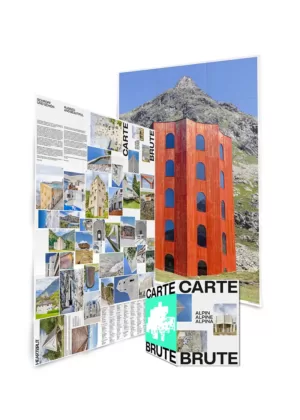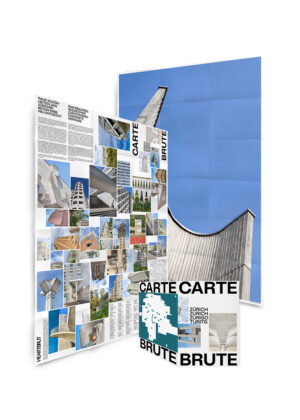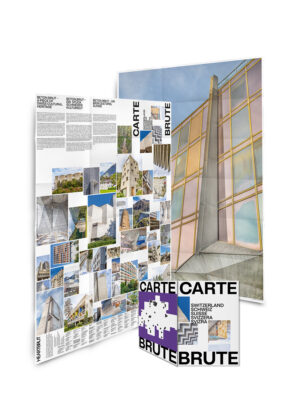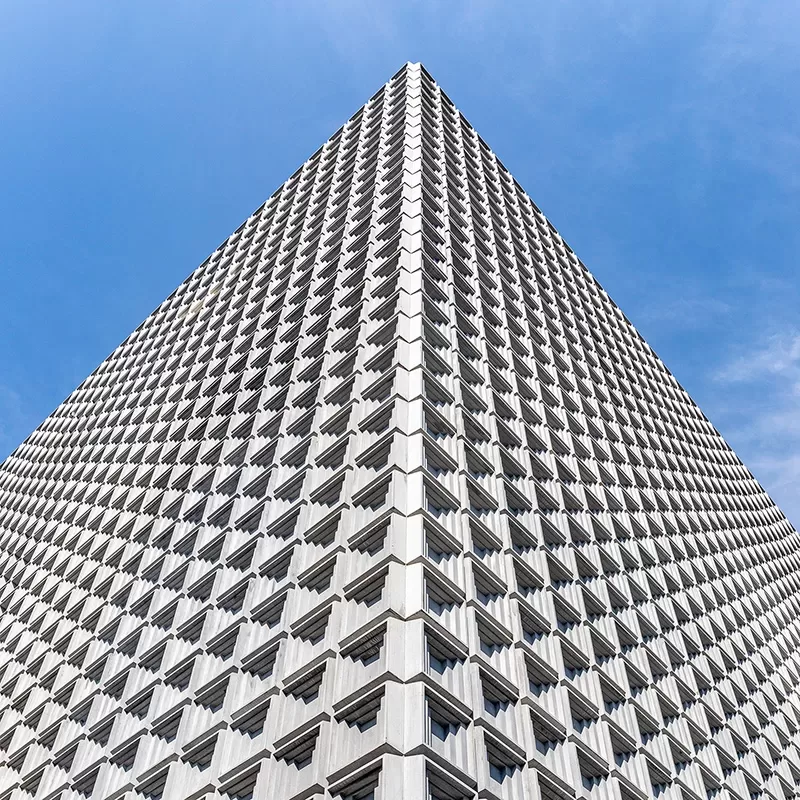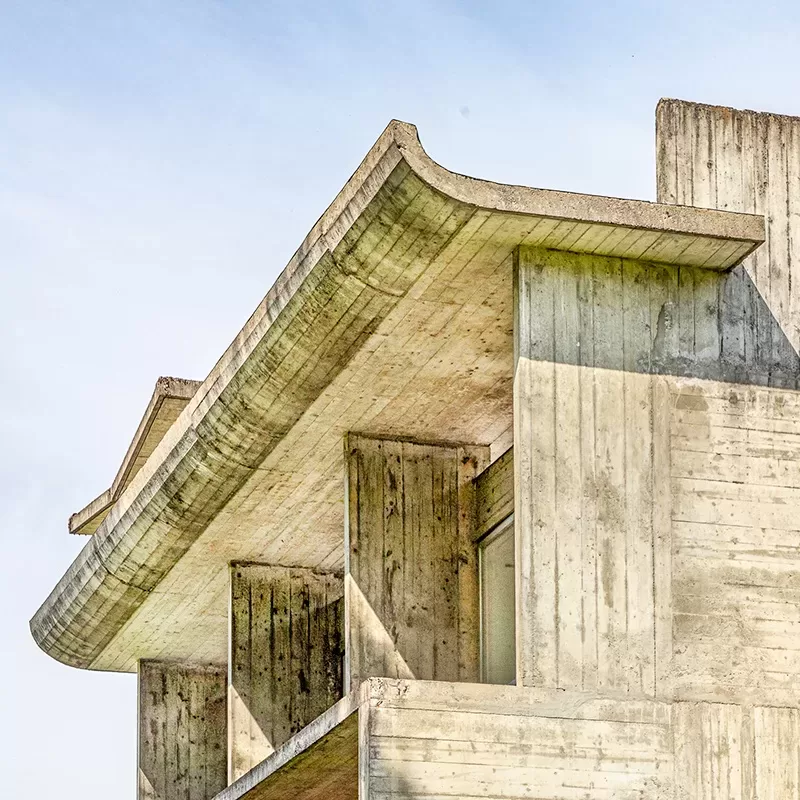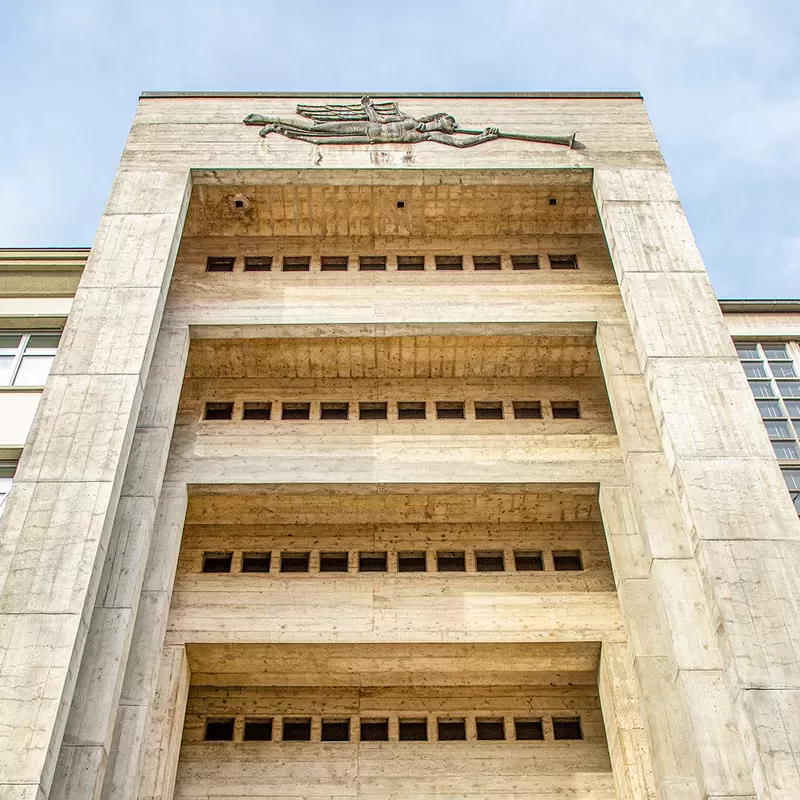
Église Saint Nicolas

Words & Photography: Karin Bürki
- Sacral
- Walter Maria Förderer
- 1967-1971
- Rue de l'Église, Hérémence
- Valais
- Object of National Significance
- Listed in Carte Brute Switzerland
Inaugurated on 31 October 1971, the 17-metre-high church massif, which extends over several plateaus, appears to have been carved out of the rock with its numerous openings, nooks and crannies. It is a revelation, and not just for lovers of exposed concrete. No wonder the awe-inspiring combination of Gesamtkunstwerk and multi-purpose building has been declared a national monument. A pilgrimage.
The ascent to the sacred icon begins in a more secular way. The base houses a bar, a village shop, a post office and a public toilet. Weather-beaten chalets line the narrow street. A concrete staircase leads up to the exposed central plateau. A fountain of interlocking concrete blocks gurgles in the centre. It is decorated with shocking pink geraniums, carefully arranged in Eternit planters by Willy Guhl. The draughty esplanade is also the location of the church’s slightly hidden main entrance. Before entering, it is worth having a moment’s rest, because you are about to be blown away.
The monumental interior is a revelation, even for the hardboiled and unbelieving. The vast, grotto-like, hexagonal space can hold 1000 people. Expressionist concrete structures immediately catch the eye. Indirect light falling through strategically placed openings in the jagged ceiling adds an extra sense of spine-tingling excitement. The liturgical elements are made of wood and embody the open and inclusive spirit of the Second Vatican Council (1962-1965). Along the walls and ceiling, wooden frames absorb the noise and frame paintings from the old church. You cannot help but fall to your knees, such is the architectural power of this Gesamtkunstwerk. No miracles were needed for Förderer’s masterpiece to be quickly granted national heritage status.
But the journey does not end there. An outside staircase leads to Rue d’Église, where the post bus stop and access to the church tower are located. This is where Förderer shows his pragmatic and service-oriented side. As well as housing a library, the tower has a viewing platform at the top. It offers a sweeping view of the village, the white earth pyramids of Euseigne across the valley, the snow-capped Dent Blanche and other high Alpine peaks.
The Romantics would have taken great delight in Förderer’s sublime erratic block. In the jagged rock formations, winding staircases and sacred caves, they collide, the great Helvetic scenes of longing, myth and modernity, mountains and concrete. Whatever the future holds, the concrete heart and soul of Hérémence will continue to beat, strong, indestructible and beautiful. Amen.
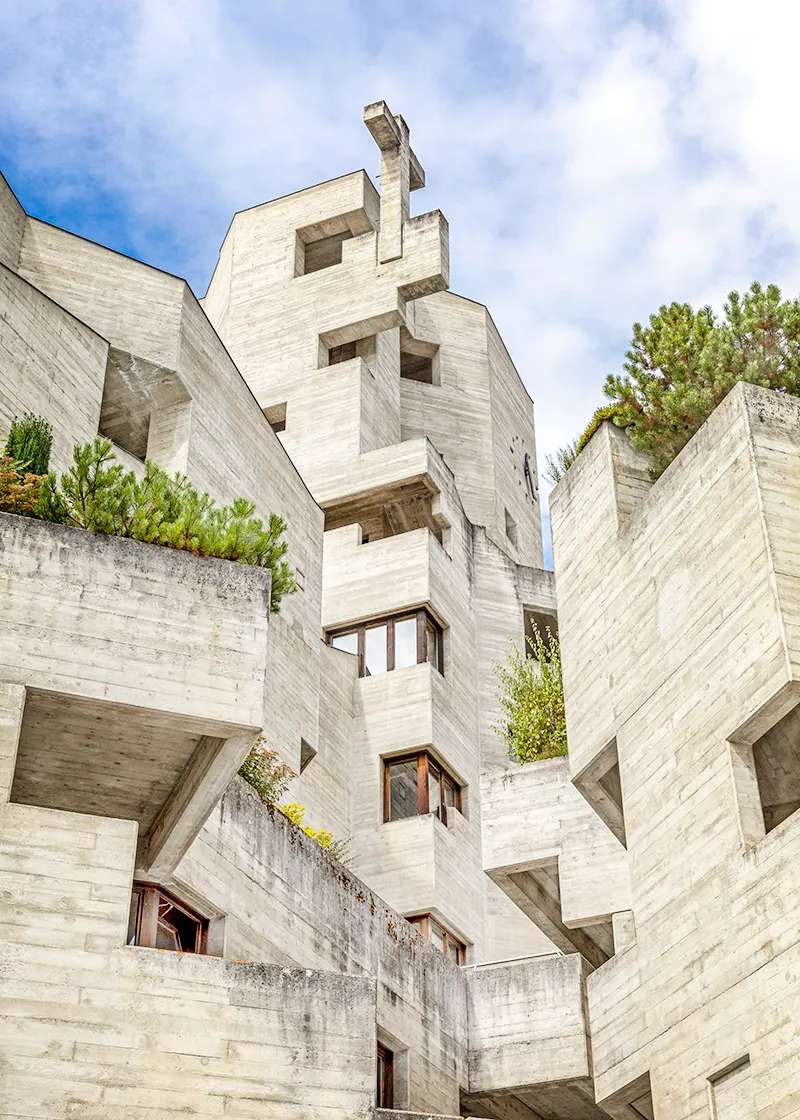
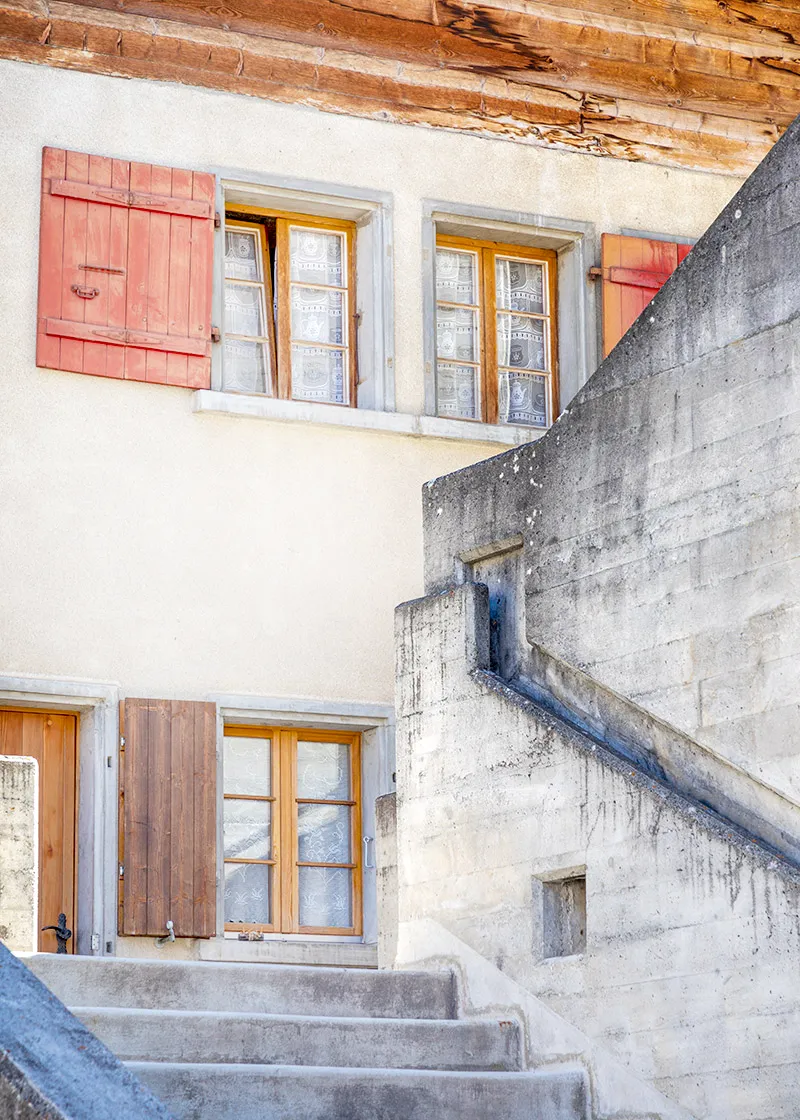
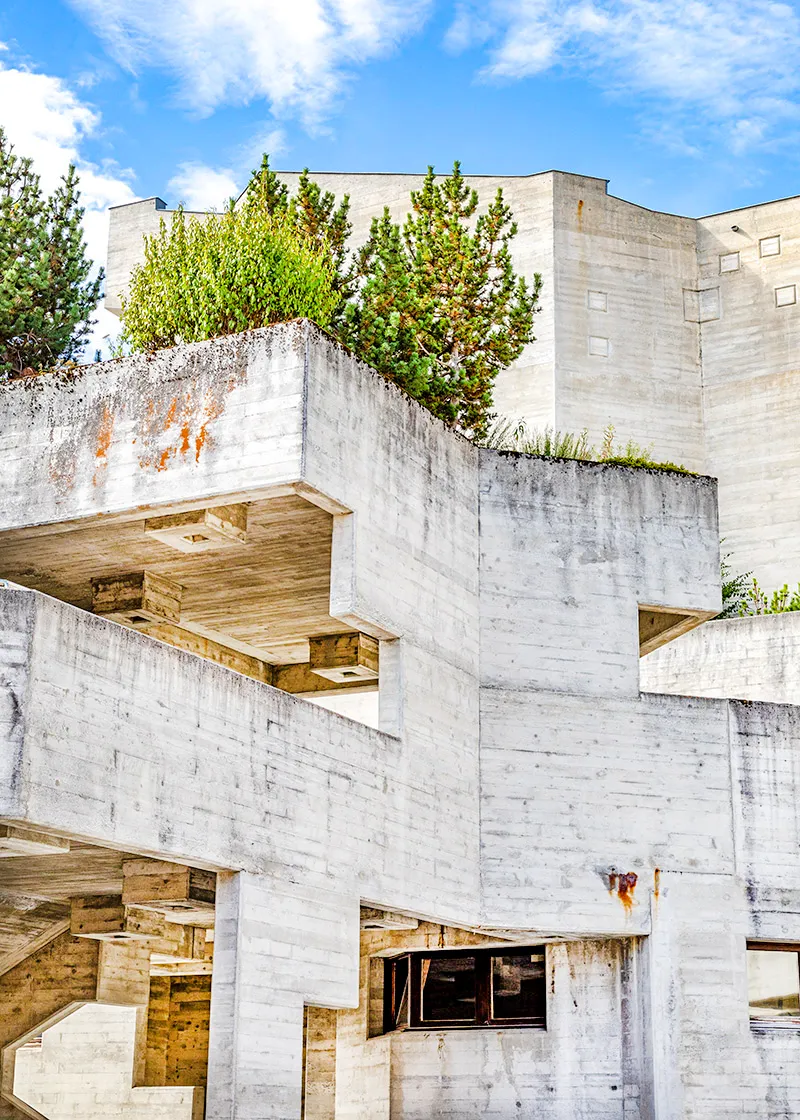

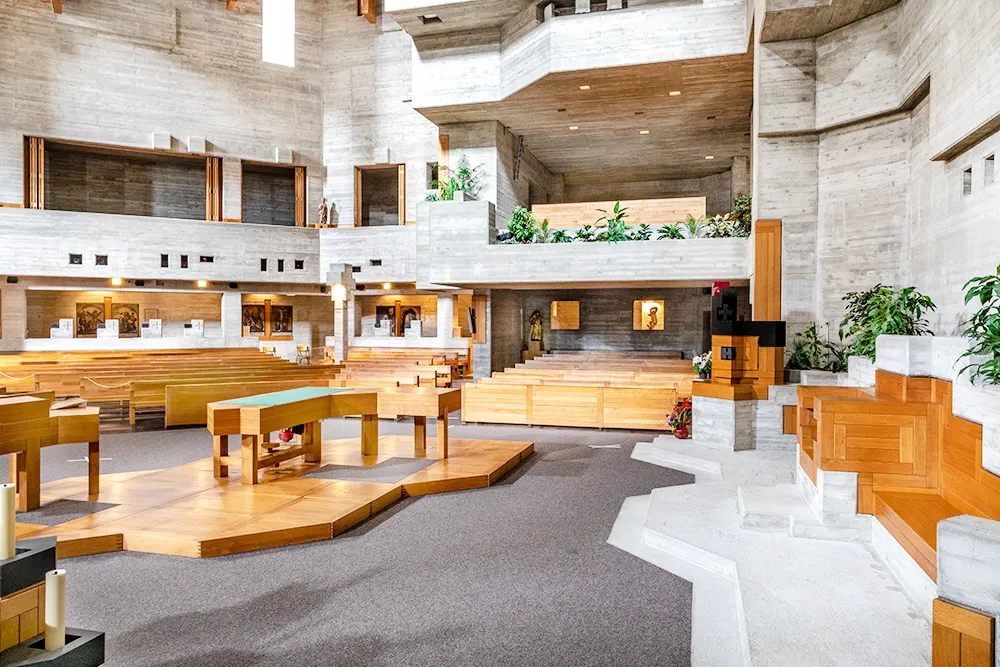
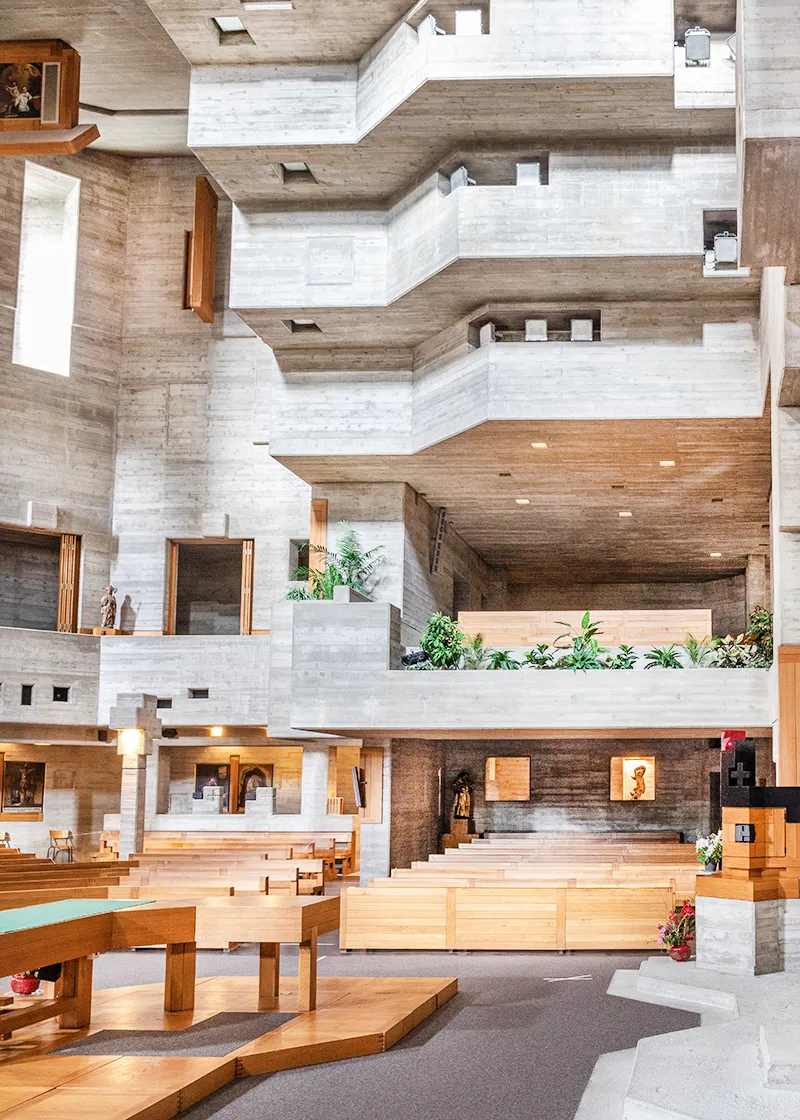
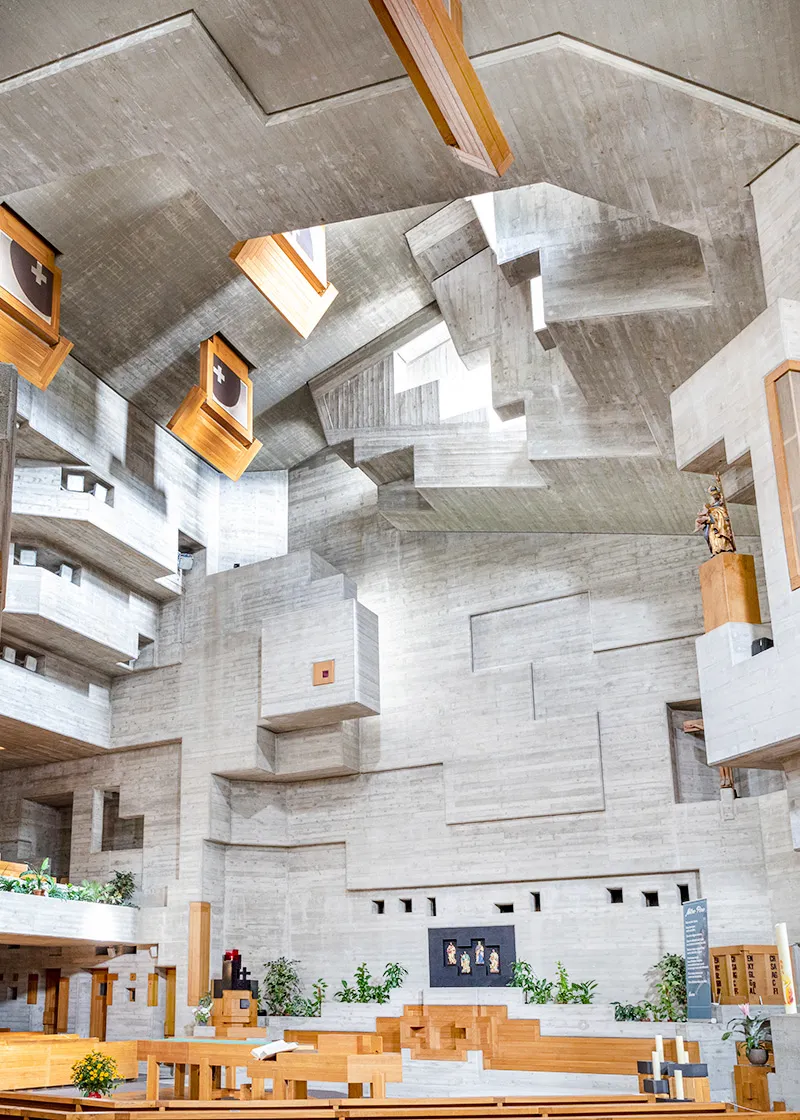
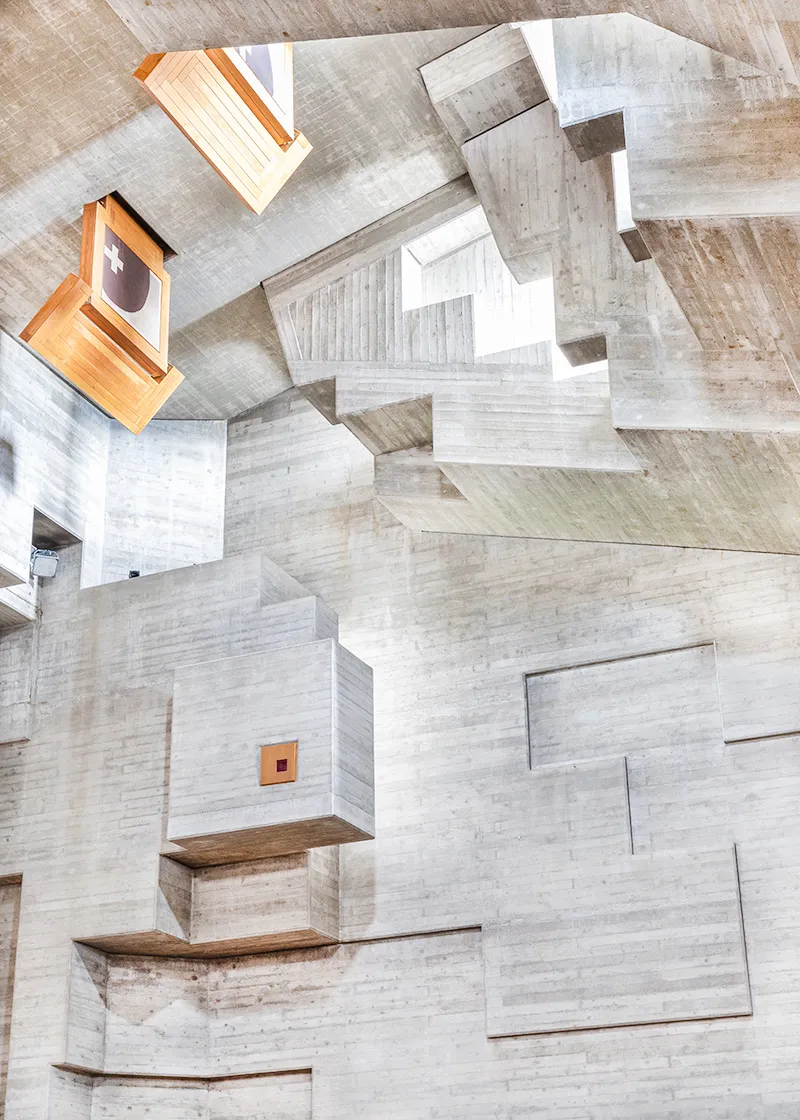
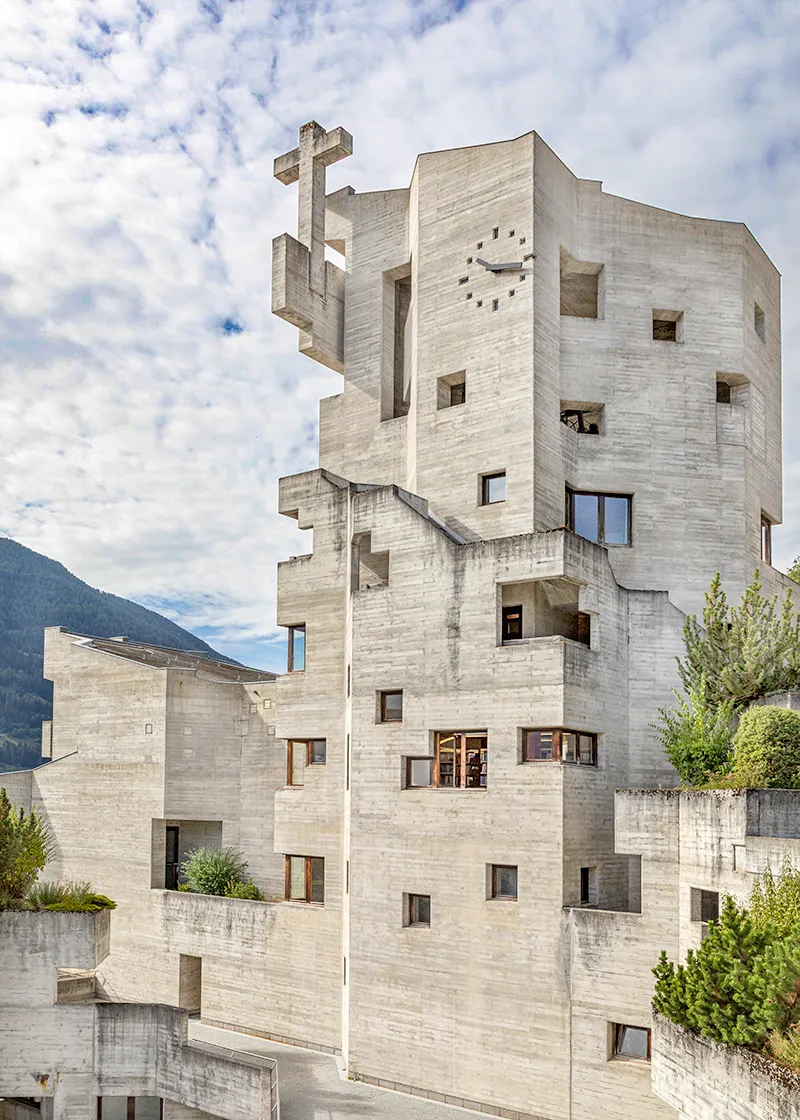
© Karin Bürki/Heartbrut
© Karin Bürki/Heartbrut
- Explore more
- More objects
